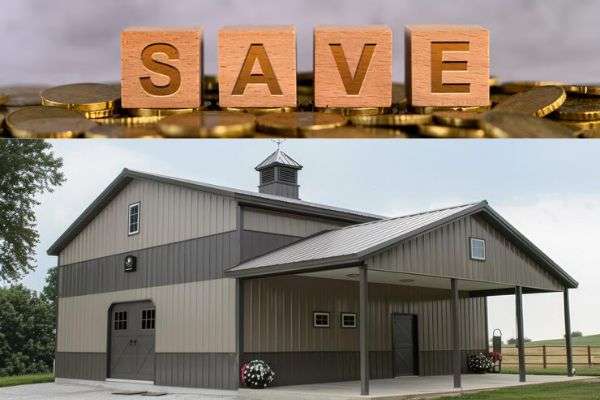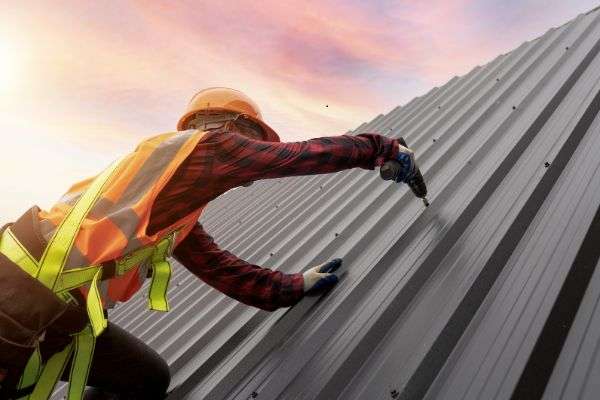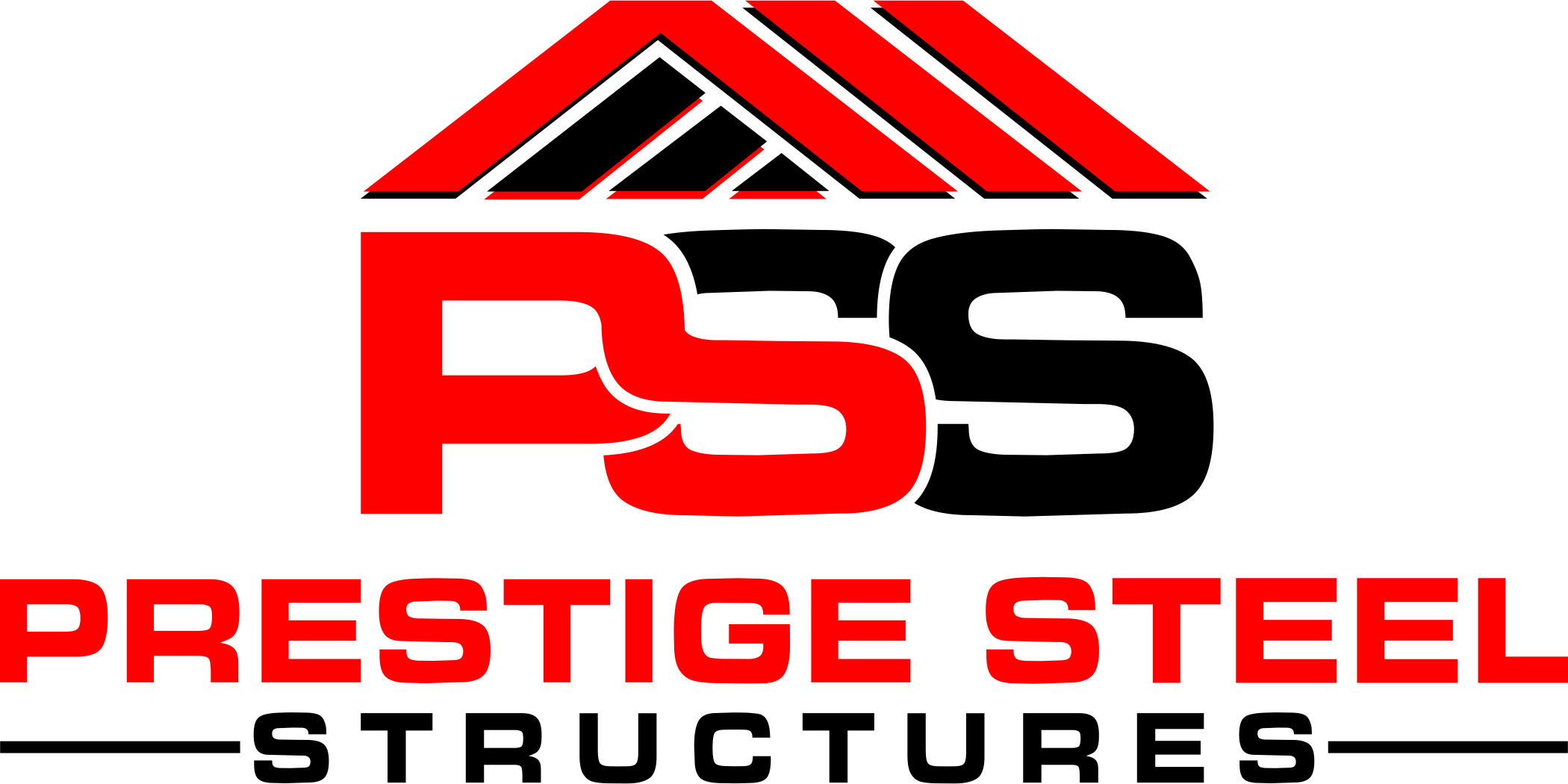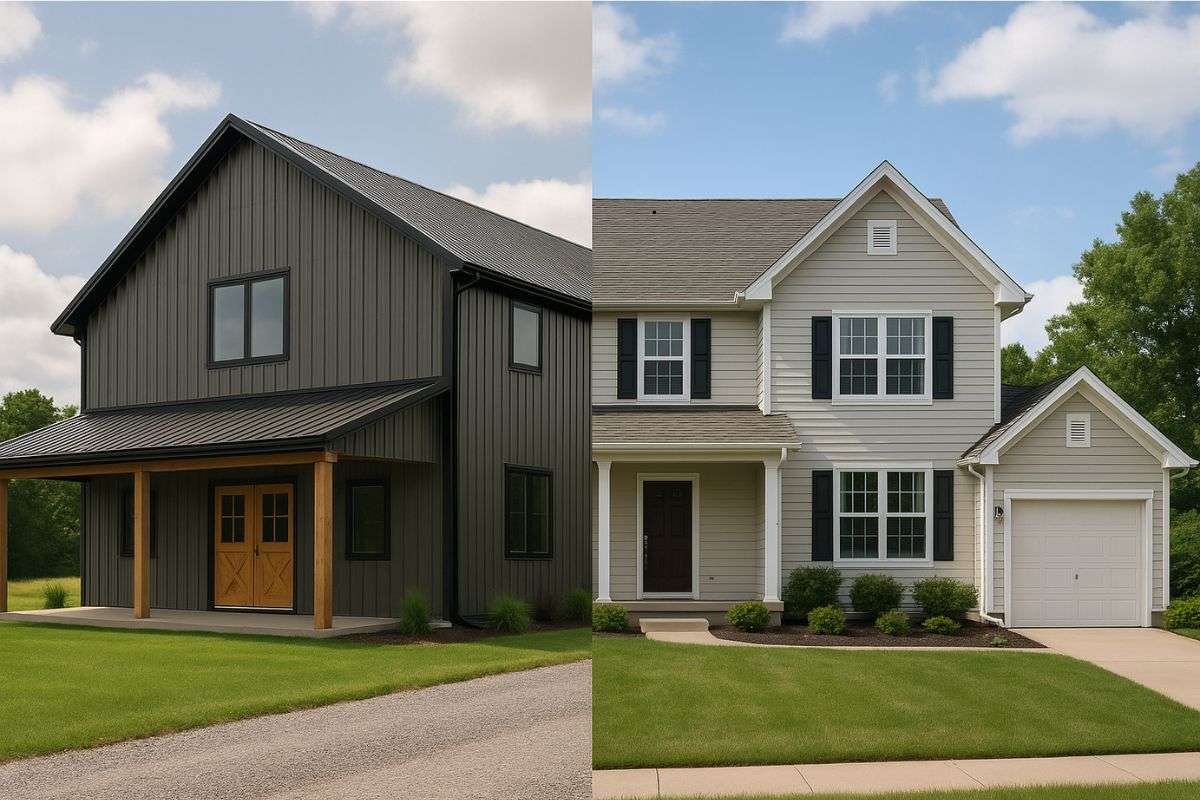Barndominiums are becoming a popular choice for homebuyers seeking lower construction costs and faster build times. They often cost less than traditional houses, mainly due to simpler designs and materials. These structures typically use metal frames and open floor plans, which reduce building complexity.
Traditional homes require more materials, labor, and time to complete. They also have stricter building codes in some areas, which adds to the cost. In contrast, barndominiums are often more flexible with layouts and easier to customize for less money.
However, prices can vary depending on size, location, finishes, and the cost of land. While a basic barndominium may be cheaper upfront, luxury features can quickly raise the cost. It’s important to compare total expenses, including utilities, permits, and long-term maintenance.
Barndominiums also tend to be more energy-efficient due to metal building construction and insulation options. This can save money on utility bills over time. Their durability also means lower repair costs in many cases.
In general, barndominiums offer a cost-effective alternative to traditional homes. They’re ideal for people who value space, simplicity, and budget-friendly construction. Always get quotes for both types of builds to understand what suits your goals and location best.

Are Barndominiums Less Expensive Than Regular Homes?
In many cases, building a barndominium can be more affordable than building a traditional house. One reason is that barndominiums are usually built using metal frames, which are cheaper and faster to construct. Metal buildings require fewer materials and less labor, which helps reduce the overall cost of construction.
These types of structures are commonly used in commercial projects because of their efficiency and durability. That same efficiency translates into cost savings for residential builds. This makes barndominiums a smart option for those who want a budget-friendly yet sturdy home.
Another cost-saving factor is how the steel frame supports the structure. The weight is carried by the roof system, not the interior walls. This means you don’t need expensive load-bearing walls throughout the home. Skipping those walls helps save money on materials and labor.
This design also allows for more freedom inside the home. You can place walls and rooms anywhere you like. The open layout makes it easy to customize your space to fit your needs without extra costs.
Barndominiums give you flexibility and function, all while keeping the budget in check. They are ideal for anyone who wants a modern home with fewer limitations and a lower price tag.
Why a Barndominium Might Be a Smarter Choice Than a Modular Home
When deciding between a modular home and a barndominium, both offer cost savings and fast construction. But barndominiums often stand out as the better long-term investment with more flexibility and durability.
Modular homes, also known as pre-fabs, are built off-site in a factory. These homes are made in sections and assembled at your property. They’re popular for being quick to set up and consistent in quality.
Benefits of modular homes include:
- Fast assembly due to factory-built modules
- Customizable with pre-designed layouts
- Less risk of weather-related construction delays
- Typically 15% cheaper than traditional wood-frame homes
However, modular homes come with limitations. Over time, they tend to lose value faster than traditional homes. They also lack the strength and long-term flexibility that many homeowners need.
In contrast, barndominiums are rising in popularity—and for good reason. These steel-frame homes offer open floor plans, sturdy construction, and a modern, industrial look. Whether built from scratch, converted from a barn, or assembled from a kit, barndominiums give homeowners more control over the layout and design.
Here’s why barndominiums often come out ahead:
- Built with strong steel frames that reduce material costs
- No need for load-bearing walls, allowing full interior flexibility
- Kits can speed up construction while keeping costs low
- Tend to retain value better than modular homes over time
- Offer more customization, especially for large open spaces
Barndominiums are ideal for those who want a home that adapts to their needs. Whether you’re creating a family home, workshop space, or multi-purpose layout, barndos can do it all—often without breaking the budget.
While modular homes have their place, barndominiums give you more room to grow, better long-term value, and stronger design flexibility.

Barndominium vs. Traditional Home: Which One Is More Cost-Efficient to Build?
Barndominiums have grown in popularity as a fresh alternative to conventional homes. They combine residential comfort with simplified, practical design. Compared to traditional homes, barndominiums offer several benefits that make them an attractive choice—especially when it comes to building efficiency, flexibility, and maintenance.
While both home types serve the same purpose, how they are built and maintained can differ greatly. Traditional homes follow long-established construction methods using wood framing, asphalt shingles, and detailed floor plans. This process can be time-consuming, with multiple phases and complex structural requirements.
Barndominiums, on the other hand, typically use a steel frame system. This allows for a quicker and more straightforward build. The core structure—often referred to as the “shell”—goes up much faster than a wood-framed house. Fewer interior load-bearing walls are required, which gives homeowners more freedom to design open and adaptable living spaces without sacrificing stability. Additionally, building barndominiums require minimal permit hurdles in many areas, streamlining the approval process and accelerating project timelines.
Here are some of the reasons barndominiums are seen as more efficient to build and maintain:
- Faster assembly: The structural frame is pre-engineered, so construction can be completed in less time.
- Open floor plans: With fewer structural restrictions, interiors can be laid out to suit modern lifestyles.
- Durable materials: Metal roofing and siding are long-lasting and require less maintenance over time.
- Versatile use: Barndominiums can double as live-work spaces, combining home, garage, and shop under one roof.
However, some aspects of barndominium construction can be more complex. Specialized crews may be needed to assemble the steel frame, and not all lenders are familiar with financing this type of property. Appraisals may also be more difficult due to the lack of similar nearby properties.
Bottom Line: Barndominiums are a smart option for people seeking a durable, flexible home with simplified construction and long-term savings on upkeep. While they may come with some unique considerations, they offer a fresh take on homebuilding that’s worth exploring.
How Do Appraisers Determine the Value of a Barndominium?
Barndominiums are unique homes, and that uniqueness can sometimes make the appraisal process more challenging than usual. In traditional real estate, appraisers look at similar homes in the area to set a fair market value. This is easy with standard wood-frame homes, which are often built using the same materials and methods.
Appraisers usually focus on:
- Size of the home (square footage)
- Location
- Recent sales of similar homes nearby
- Construction quality and design features
With barndominiums, though, things aren’t so simple. These homes often start from steel buildings or kits, which look very different from traditional houses. Because of that, it can be difficult to find comparable properties nearby for a fair value comparison.
Another challenge is that barndominiums are rarely built in subdivisions or grouped communities. Subdivisions help establish predictable values because homes in the area follow similar designs, materials, and building standards. Appraisers rely on these nearby sales to make accurate valuations.
In contrast, barndominiums are often:
- Built on rural land or scattered locations
- Custom-designed with one-of-a-kind layouts
- Created from kits, conversions, or original builds
This makes it hard for appraisers to find “comps”—similar homes sold in the same area. Without those comps, it’s harder to prove the home’s market value to lenders. As a result, some banks may hesitate to approve loans or offer less favorable financing terms unless the buyer has a significant down payment.
These limitations don’t mean barndominiums are less valuable. In fact, they often hold or grow in value over time like traditional homes. The challenge is in proving that value in a way that lenders and appraisers can agree on.
If you’re considering a barndominium, be prepared to work with appraisers who understand non-traditional homes. Also, consider talking to lenders who are familiar with alternative property types. This preparation can help you get a fair appraisal and smoother financing process.

House vs. Barndominium: A Closer Look at Construction Efficiency
When comparing traditional homes and barndominiums, the differences in how they’re designed and built play a major role in overall cost and efficiency. Each construction method comes with its own strengths, but barndominiums offer several key advantages—especially for those looking for streamlined building processes and modern layouts.
1. Design and Foundation Process
Traditional homes typically follow a more complex construction method. Builders begin by excavating the site and pouring a perimeter foundation, which involves multiple steps and trades. This part of the process takes time and adds to the overall cost. It often includes tasks like forming, trenching, and separate pours for footings and slabs.
Barndominiums simplify this stage significantly. Most barndos use a monolithic slab foundation, where the concrete pad and footings are poured at the same time. This speeds up the project and reduces site work. Fewer interior load-bearing walls are needed because the steel frame supports the weight, allowing for flexible, open interior layouts and reducing design complexity.
2. Labor Requirements
Labor is another area where barndominiums can provide savings, though it comes with some trade-offs. Traditional homes depend on a wide range of skilled workers including framers, masons, and roofers. The variety of trades involved can stretch timelines and increase labor costs.
Barndominiums remove many of these layers. They don’t require masonry or complex wood framing, which reduces the need for multiple teams. However, because they use steel frames, construction may require specialized crews and equipment, such as cranes and experienced metal builders. In some areas, finding those metal building contractors may add to the timeline or cost.
Bottom Line: Barndominiums are faster to build, simpler in design, and more efficient overall—making them a smart alternative to traditional homes.
Is It Better to Build a New Barndominium or Renovate an Existing One?
If you’re deciding between building a brand-new barndominium or renovating an existing structure, the right choice depends on the condition of the building and how much change you need. While renovating might seem like the easier route, new construction is often more cost-effective—especially if the existing building needs major updates.
When Renovation Makes Sense:
Renovating can work well if the existing structure is already in solid shape and aligns closely with your plans. Minor changes to the interior layout or finishes won’t usually break the budget, and you can save time by working with what’s already there.
Renovation may be the right choice if:
- The building is already a barn-style or steel structure with a strong foundation
- You only need minor updates like adding walls, insulation, or finishes
- The roof, frame, and insulation are all in good condition
When It’s Better to Build New:
If the structure requires major work—like a new foundation, roofing, or framing—it may cost more to renovate than to start fresh. Large-scale demolition and rebuilding can quickly drive up expenses and delay your timeline.
New construction is usually the better option if:
- The building needs structural reinforcement or a new foundation
- More than 20% of the structure must be demolished or heavily altered
- The layout doesn’t fit your needs and would require major remodeling
Helpful Tip: If major parts of a structure need replacing, starting fresh is often more cost-effective than renovating. A barndominium design expert can assess your goals and help you choose the smarter option based on the building’s condition and your long-term plans.
Are Barndominium Kits a Smart Choice?
Barndominium kits offer a simplified approach to building a custom home. They bundle essential materials into one package, making the process faster and easier—especially for first-time builders or those taking a DIY approach. But while convenient, kits aren’t always the best fit for every project.
Why Choose a Barndominium Kit?
Kits appeal to many homeowners because they make the build process more manageable. Here’s why:
- Pre-packaged materials: You get everything you need delivered together, which simplifies planning and sourcing.
- Streamlined process: Kits reduce guesswork, helping you avoid delays and missing parts.
- Helpful for DIYers: If you’re managing the build yourself, a kit offers a more predictable experience.
- Bulk savings: Buying a full kit may cost less per item than purchasing materials separately.
What to Watch Out For
Although kits offer convenience, they can come with trade-offs:
- Limited flexibility: Most kits follow a pre-set design, which might not align with your specific vision or layout needs.
- Unused extras: Some kits include materials or components you may not need, adding waste or complexity.
- Not always the cheapest: For custom designs or unique layouts, sourcing materials separately could save money in the long run.
Bottom Line: Barndominium kits are a great option for those who want a fast, no-fuss way to get their project started. They work best when you’re aiming for a simple design and value a predictable build process. However, if you have a custom plan or want full design freedom, building from scratch may be the smarter choice.
Additional Factors That Influence Cost and Value:
Even with a kit, other elements will impact your total investment:
- Material availability: Prices and delivery timelines can vary by region.
- Location: Local building codes, zoning, and labor access may affect build complexity.
- Insulation and energy efficiency: Not all kits include insulation or weatherproofing, which are essential for long-term comfort.
- Ongoing maintenance: Long-term upkeep can vary depending on materials and finishes.
In the end, careful planning and a clear understanding of your goals will help determine if a barndominium kit is right for you.
Conclusion
Barndominiums offer a smart, modern alternative to traditional homes with faster builds, durable materials, and flexible layouts. They’re ideal for homeowners seeking efficiency, style, and value. Whether you’re comparing build options, considering a kit, or renovating an existing structure, knowing your goals is key. While financing or finding the right crew can be challenges, the benefits—cost savings, open design, and long-term durability—often outweigh them. Barndominiums suit those who want more than just a home: they want freedom, creativity, and financial sense. Do your research, talk to experts, and explore the possibilities. From ground-up builds to smart modifications, a barndominium could be the perfect fit for your lifestyle and budget.
Frequently Asked Questions
Are barndominiums cheaper to build than regular homes?
Yes, barndominiums are usually more affordable to build. They require fewer materials and less labor than traditional homes. Faster construction also helps reduce overall building costs.
Can I customize a barndominium layout?
Barndominiums offer open floor plans, making customization easy. You can place rooms anywhere without structural limitations. They’re perfect for creating unique or flexible living spaces.
Are barndominium kits beginner-friendly?
Yes, most kits are designed for easy assembly. They include all key materials in one shipment. Clear instructions make them ideal for DIY projects.
Is it harder to get financing for a barndominium?
Financing can be more complex than for traditional homes. Lenders may struggle with appraisals or lack of comparable sales. Some banks require higher down payments or detailed plans.
Do barndominiums hold their value over time?
Yes, barndominiums tend to hold value well. When built properly, they appreciate like traditional homes. Durable materials also help reduce long-term repair costs.


